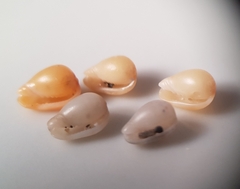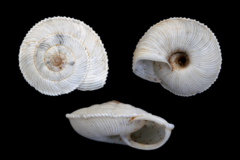Common cuttlefish
Sepia officinalis
Scientific Name: Sepia officinalis
Common Name: Common Cuttlefish (locally known in Spanish as "Sepia")
Description:
The Sepia officinalis is a fascinating mollusk commonly found in the coastal waters of the Comunidad Valenciana. This species is known for its remarkable ability to change color and texture, a characteristic that aids in camouflage and communication. Here are some key features of the Common Cuttlefish:
- Body Structure: Cuttlefish possess a unique internal shell known as a cuttlebone, which helps control buoyancy. Their bodies are elongated with broad, flat mantles and they feature a distinctive W-shaped pupil.
- Size: Typically, they reach a length of 15-25 cm, although individuals as large as 45 cm have been recorded.
- Habitat: They prefer shallow, sandy or muddy sea bottoms but can also be found at depths up to 200 meters.
- Diet: These intelligent creatures are carnivorous, preying on small fish, crabs, and other crustaceans.
- Behavior: Known for their impressive cognitive capabilities, cuttlefish exhibit complex behaviors, including advanced hunting tactics and social interactions.
- Reproduction: The mating season typically occurs in spring and summer. Females lay clusters of eggs which hatch into juvenile cuttlefish.
The Common Cuttlefish is not only an important part of the local marine ecosystem but also a valued species in regional gastronomy. In the Comunidad Valenciana, it is often used in traditional dishes such as "arroces" (rice dishes) and "fideuàs" (noodle dishes), highlighting its cultural significance as well.







